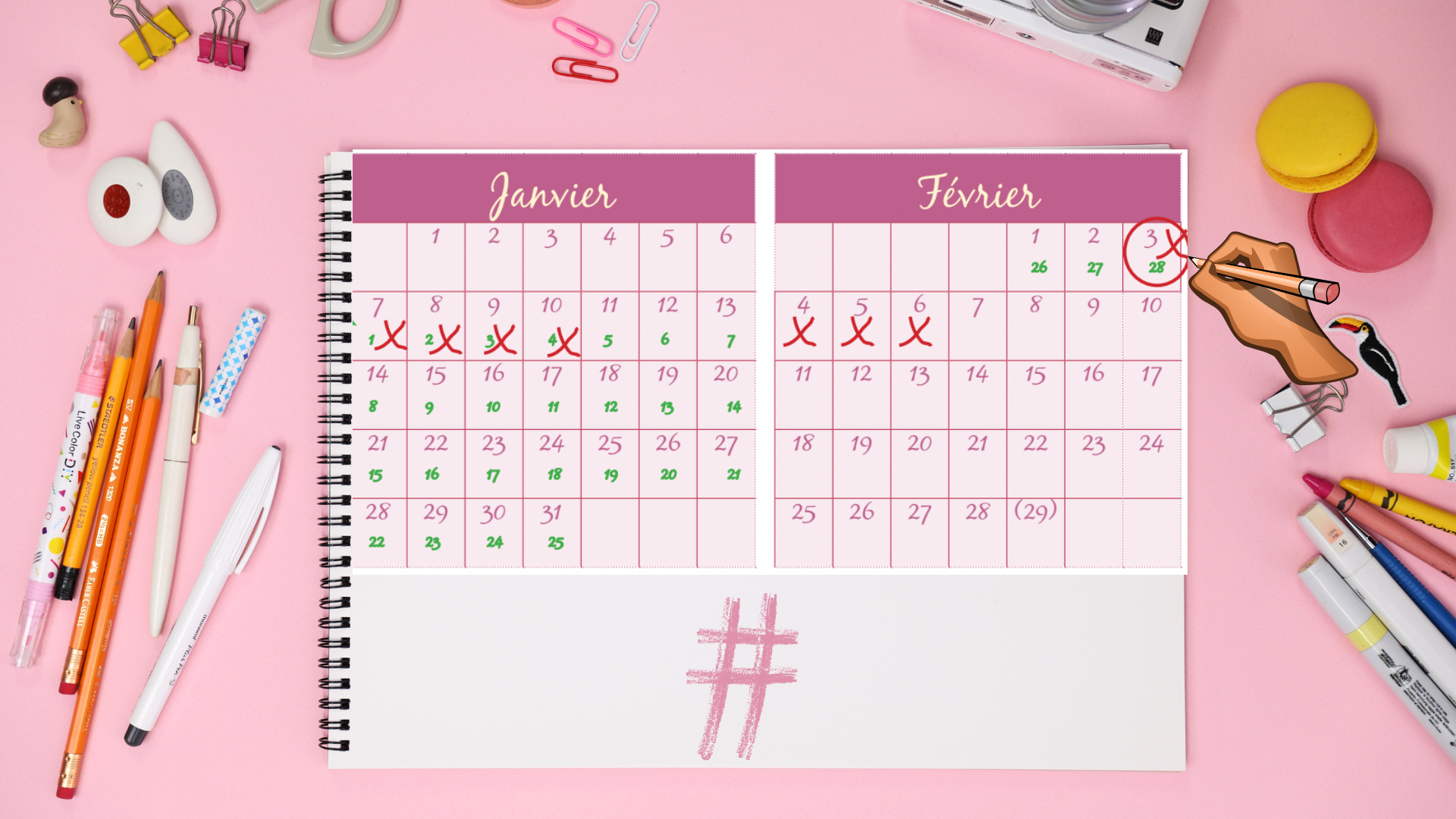How do you track and calculate your menstrual cycle?
To manage your period more effectively, it’s important to understand what’s going on inside your body. Thanks to our tips and the WeerWi calendar, you can track and calculate your menstrual cycle. Here’s how!
What’s the point of tracking your cycle?
From your first period to your menopause (often between the ages of 45 and 50), your body follows the rhythm of your menstrual cycle. Each time you see your period, a new cycle begins, ending the day before your next period.
As your cycle progresses, your moods change and your body expresses itself differently. Tracking your menstrual cycle allows you to better predict and understand these physical and emotional changes.
Do you feel irritated for no particular reason? Maybe you’re about to have your period, and you need to slow down and be alone for a while. Are you feeling flirtatious and need to see people? Maybe you’re ovulating. In short, the aim is to understand yourself better and accept these mood swings without feeling guilty.
But keeping track of your cycle also helps to reassure yourself and avoid being taken by surprise by your period. You know roughly when they’re going to arrive, so you can be better prepared for them (buy some menstrual protection, slip a few in your bag).
If you’ve already started having sex, you can find out when you’re ovulating. This corresponds to the days when you are most likely to become pregnant. Knowing how to detect it will help you avoid an unwanted pregnancy, or if you want to, make it easier to get pregnant.
How do you calculate the length of your cycle?
A woman’s menstrual cycle lasts between 21 and 35 days. Its length varies from woman to woman, but it can also change from month to month. For some girls, the cycle is long, lasting more than 35 days for more than 3 months. Others have a short cycle lasting less than 21 days.
To calculate the length of your cycle, the first thing to do is to note the start of your period in a notebook or on the WeerWi calendar for at least 3 months. Then count the number of days between the 1st day of your period and the start of your next period. Repeat this calculation for at least 3 cycles, and you’ll know the length of your cycle more precisely.
Looking for an easy way to track your cycle? Then take a look at the WeerWi calendar by clicking here (link to calendar). If you’re worried about the length of your cycle, go here (link to “irregular periods/cycles”), and don’t hesitate to discuss it with a midwife or doctor.
How do you know what phase of your cycle you’re in?
During your menstrual cycle, your body goes through 4 phases: menstruation, the pre-ovulatory period, ovulation and the premenstrual phase. The first day of your period corresponds to day 1 of your cycle, and the start of phase 1.
After about 7 days, you go into phase 2 for another 7 days: this is the pre-ovulatory phase. Then you enter the ovulatory phase, which lasts only 16 to 32 hours. Finally, you enter phase 4: this is the pre-menstrual period, which ends with the arrival of your next period.
To find out where you are, the first thing to do is to note down the start of your period in a notebook or on the WeerWi calendar for at least 3 months. You can then do the calculations yourself or let the calendar be your guide. Later, you may be able to identify the symptoms of your premenstrual period or even your ovulatory phase.
Source: Toubibadakar



